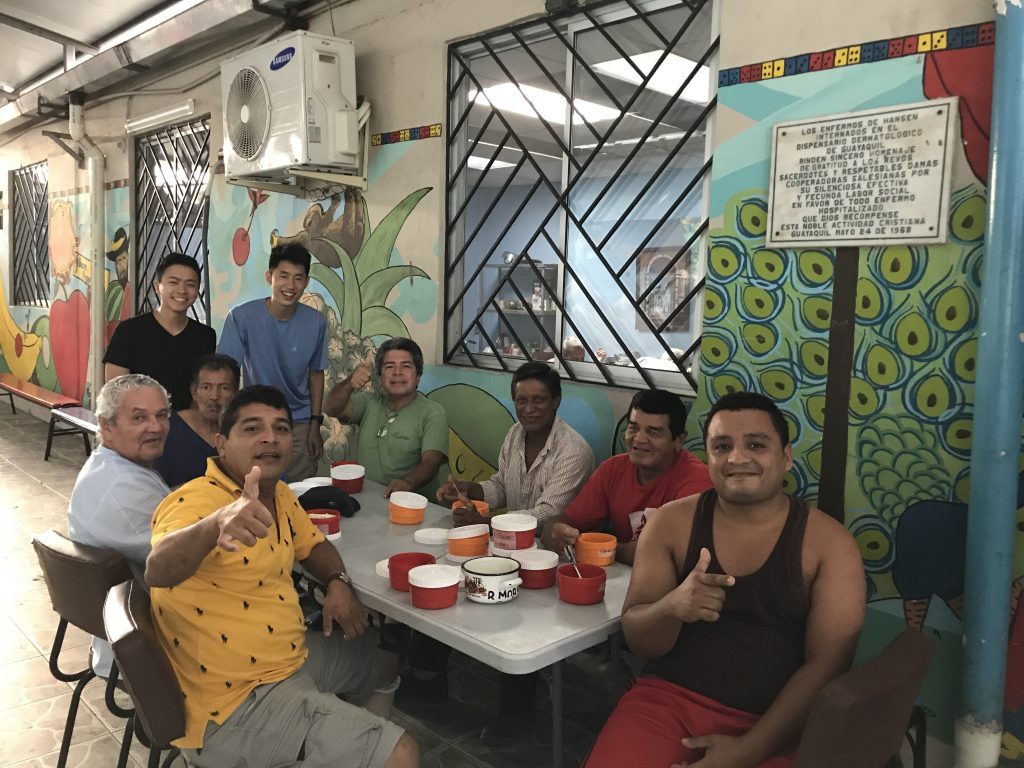
For the past month and a half, I’ve been volunteering at La Fundación Padre Damian. It is a residential hospital dedicated to fighting the stigma attached to Hansen’s Disease (Leprosy) and to helping residents live a life of dignity. If I could describe La Fundación Padre Damian in two words, it would be: life-changing and inspirational.
When I first thought of leprosy, I thought of “contagious” and “do not touch”. Other than that, I did not really know much about the disease or its effect on people. Padre Damian has opened my eyes to the realities of life with Hansen’s and I’ve come to learn more about the disease through those who have had it. Hansen’s disease is not a thing of the past. Nevertheless, it is not easily spread. You would need to have prolonged contact over many months with untreated patients to possibly catch it. Furthermore, over ninety-five percent of people worldwide have a natural immunity to the bacteria that causes it.
The patients at Padre Damian fall among the five percent that lack natural immunity. They come from all over Ecuador, but the majority share something in common: poverty. Many of them worked in el campo (the countryside) and lived life day-by-day because they could not afford to think about the future. Sister Annie, the heart of Padre Damien, said that many patients were previously malnourished. For a worker in el campo, Hansen’s is a basically a death sentence. The workers depend on their strength to make a living. However, Hansen’s affects cartilage, skin, and peripheral nerves. Individuals with Hansen’s eventually experience a loss in sensation and mobility. This would make it extremely difficult to work in the fields.
In addition to the physical strain of living with Hansen’s, the disease is also emotionally hard to endure. Many residents were ostracized in their communities. Some of their families even abandoned them. At the foundation, we use the term Hansen’s to avoid the stigma that comes with leprosy. The stigma leads to misunderstandings and shunning.
However, at Padre Damian, the residents are part of a supportive family. Most afternoons, they play dominos with each other and chat in the patio area. At other times of the day, they often make their own crafts, such as hammocks and mini crosses. The foundation also provides three meals a day, nurses, and medical attention to the residents. Several residents that I have spoken to described the foundation as life-changing. The foundation provides each resident with the opportunity to live a dignified life.

As a volunteer at the foundation, I help out with whatever the staff need for the day. I’ve organized medical equipment, cleaned rooms, and done other tasks. The best part, however, is that I get to spend a chunk of every day hanging out with and occasionally chismeando (gossiping) with each patient. I always greet them and ask ¿Cómo estás? The most common response I get is: ¡Todo bien! (all is well) and Aquí, Gracias a Dios (here, thanks to God). They never forget to mention how grateful they are for the blessings and help they’ve received from others. From there we talk about pretty much anything that pops into our minds. The smiles on their faces each day, their work ethic, and their appreciation for life despite the hardships they’ve endured are inspirational.
At the end of each volunteer day, I take a bus from Guayaquil back to the gated community where my host family lives. I return to a different, more shielded reality. Right outside the residential neighborhood there are three large fancy malls (like the ones you would find in NY) and plenty of restaurants. However, I can’t help but continue to think about the stories that the residents at Padre Damian have shared with me. After all, once your eyes are open to a reality, it is hard to shut them and return to the daily routine of things. This past month has made me think: What will I do with the blessings I was given in life? How can I improve now and not just the future?
